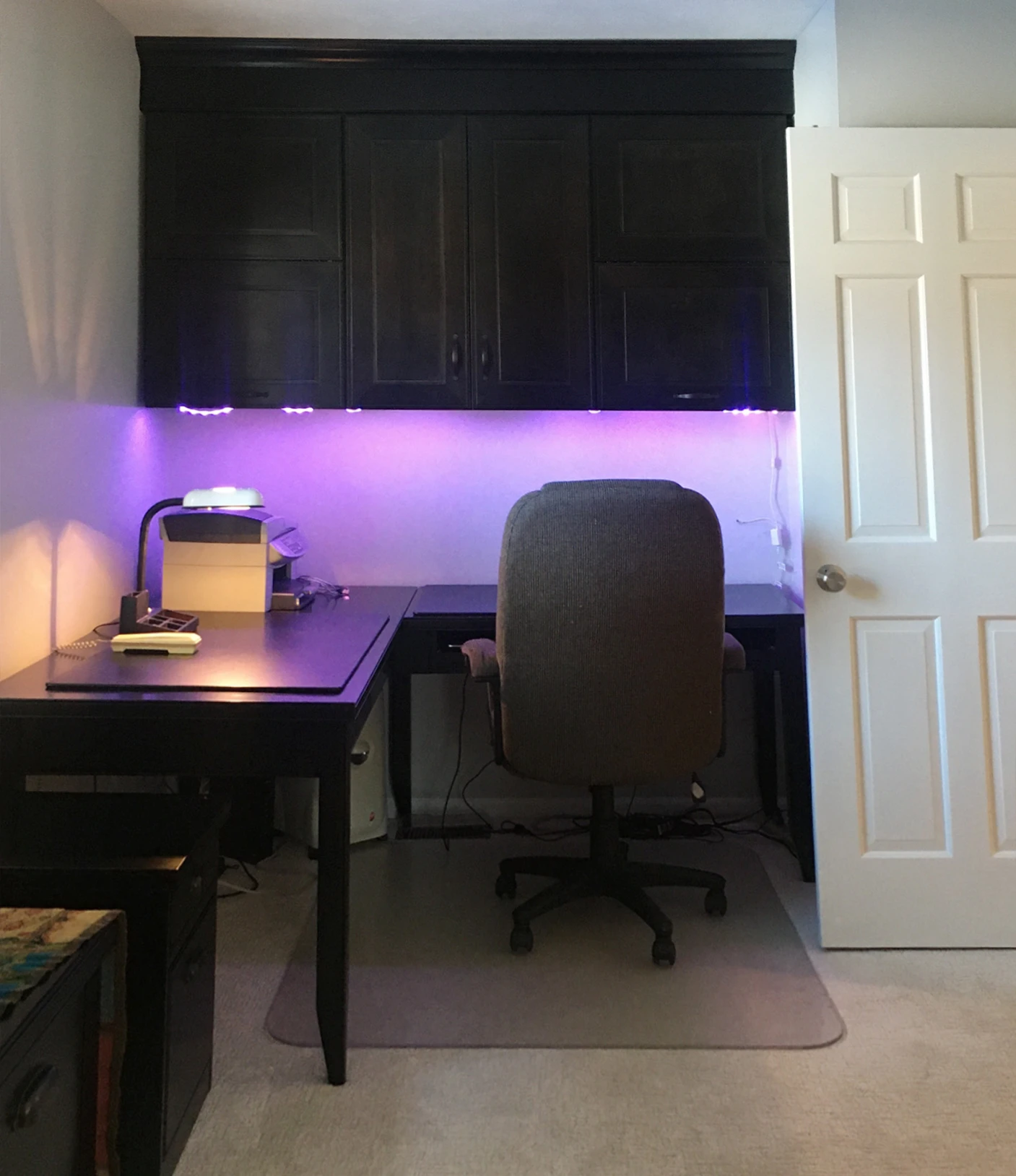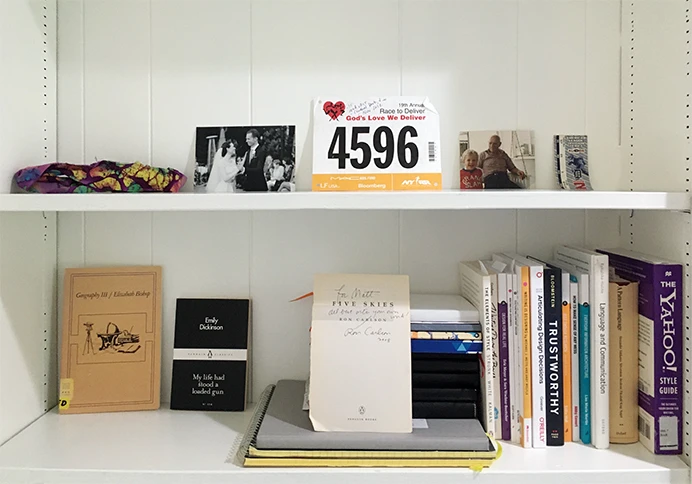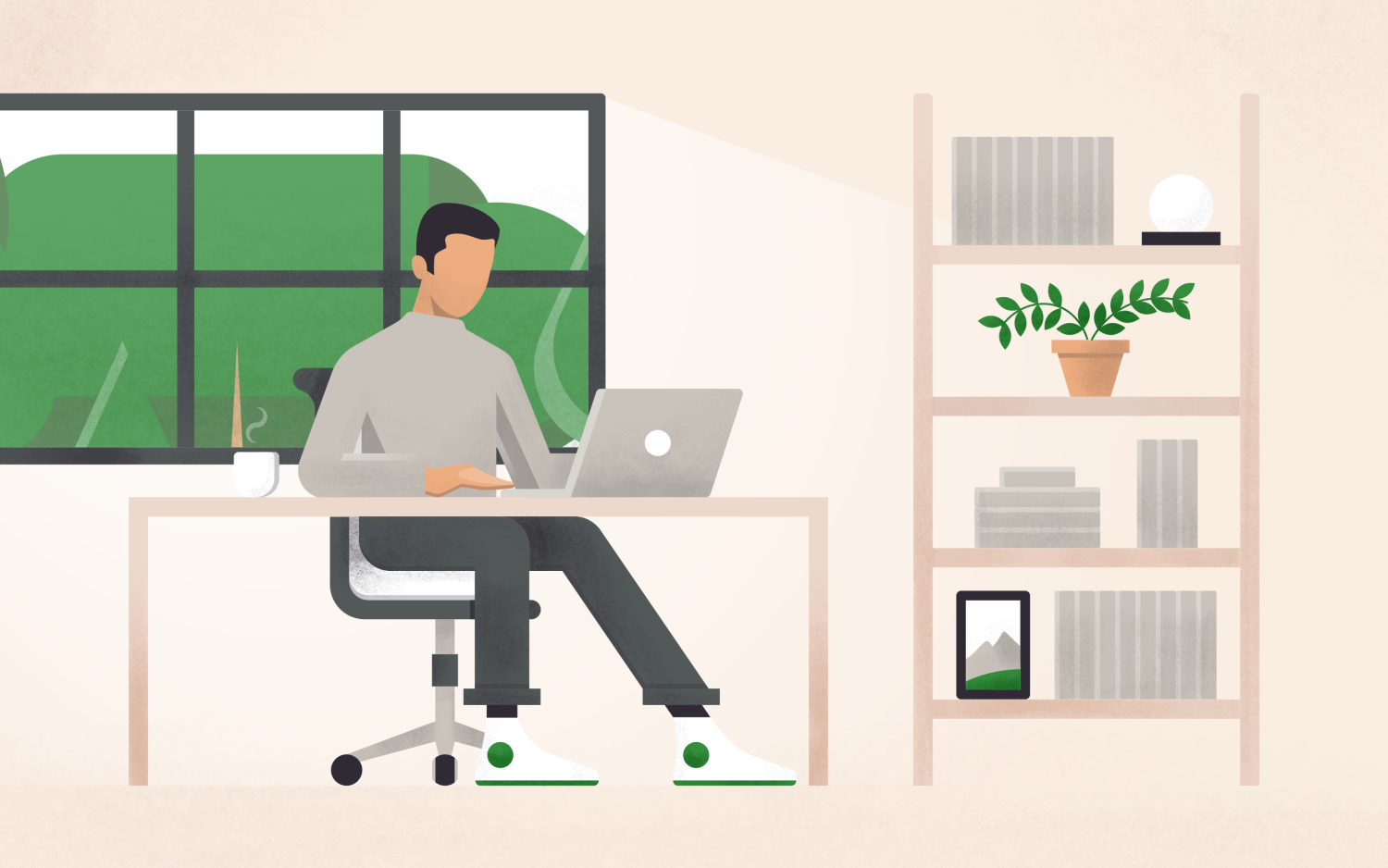At home during the pandemic, I needed to set up an office but didn’t know about interior design. Then a Duo design manager recommended just the right book.
An interior with no design
When my family moved into a house last year, I felt excited to have a room of my own. Because working from home was still mandatory at that time, that room would be my office.
The room seemed to be an afterthought for the previous owners of the house. Blocky, dark-stained cabinets took up lots of space on two walls. A large, L-shaped desk faced a blank wall. It wasn't a space I wanted to spend time in every day. But I knew very little about interior design, and didn’t know where to start.

A documentation of my office before reading "A Pattern Language."
Luckily, a design manager who I worked at Duo came to the rescue. When I shared an article on language and design systems in Slack, the manager commented, “If you have not seen or read ‘A Pattern Language’ by Christopher Alexander (mentioned in the article), you would dig it the most!” Knowing this manager to have impeccable taste and design sense, I bought the book immediately.
After the book arrived, I opened it and flipped to a section called “A Room of One’s Own.” I knew this book would help me to design a home office I loved.
Big book, bigger impact
Written in 1977 by a group of architects, the title of the book, “A Pattern Language,” was prophetic. It actually did create a new language. Strong evidence suggests the patterns, structured like networks, inspired early computing languages like hypertext.
Groundbreaking? Yes. Beloved by all? Not so much. It was, and remains, controversial because it gives anyone the tools to design spaces for themselves. It invites readers to mix and match elements. And communities of all sizes are accounted for, down to families, roommates and individuals.
The book also teaches you how to use it as you read.
Choosing a pattern language
So how can you use this book? First, find the pattern that most speaks to you. There are 231 total patterns, so you’ll spend some time sifting. Each pattern is numbered, has a problem and solution, descriptive text, studies, drawings, and photos. A list of sub-patterns is listed with each pattern to build it out further.
A pattern language for my project
I knew I wanted to start with the “A Room of One’s Own” pattern. In spite of some dated language in that section about husbands and their needs, there is some wisdom. The authors suggest that having a room of your own:
Helps develop an identity
Strengthens relationships to others in the home
Builds ties to the house itself
“No one can be close to others,” the authors write, “without also having frequent opportunities to be alone.” That bit of counterintuitive logic felt right to me.
Some of the sub-patterns for “A Room of One’s Own” are:
Workspace Enclosure
Ensure walls are behind and to one side, and no closer than eight feet in front.
Have a view to the outside.
Open Shelves
Put items one deep to make prized possessions more accessible.
Things From Your Life
Surround yourself with what’s most meaningful to you.
Make the room a living expression of you. This will appeal to visitors too.
After I spent time understanding the pattern and sub-patterns, and collecting items for the room, I got to work.
A new language, a new room
I already had a view to the outside, so I collected several “things from my life” and put them on “open shelves.”
To the room I added a desk with lighter wood and an upholstered chair that faces a window. In an open area of the room, I set a floor lamp and painted a wall a subtle yellow tone to add warmth to the natural light in the room.

After reading the “A Room of One’s Own" section, I added some open shelves to my office and placed prized items, including some family photos, a racing bib, and favorite books, one deep to make them accessible.

A brighter language meant for lighter tones in the furniture and moving furniture for a view of the outdoors.
When I’m in the room now to work, I’m aware of how design choices affect the experience of a physical space. With a chair nearby and a view of the outdoors, tricky content problems seem to unwind themselves when I sit down and allow my thoughts to wander. And when faced with a gnarly error state to explain, or if I’m just not getting into the flow of writing or editing, I can turn to the stack of my journals at the bottom of my bookshelf. Those all-important “Things From Your Life”, compiled over decades, assure me that, “Hey, you’ve been stuck many times before, but you weren’t stuck forever. It’ll come.”
I’m grateful to my Duo colleague for sharing “A Pattern Language,” which not only improved my working life; it introduced me to a new discipline of design. Putting these patterns into practice has added a looseness to how I think and work. At a moment when I might have closed out an option or rushed to a solution, I'm now more likely to search for new connections, recombine ideas and objects, and be receptive to surprise. In other words, it’s made me a better designer.




